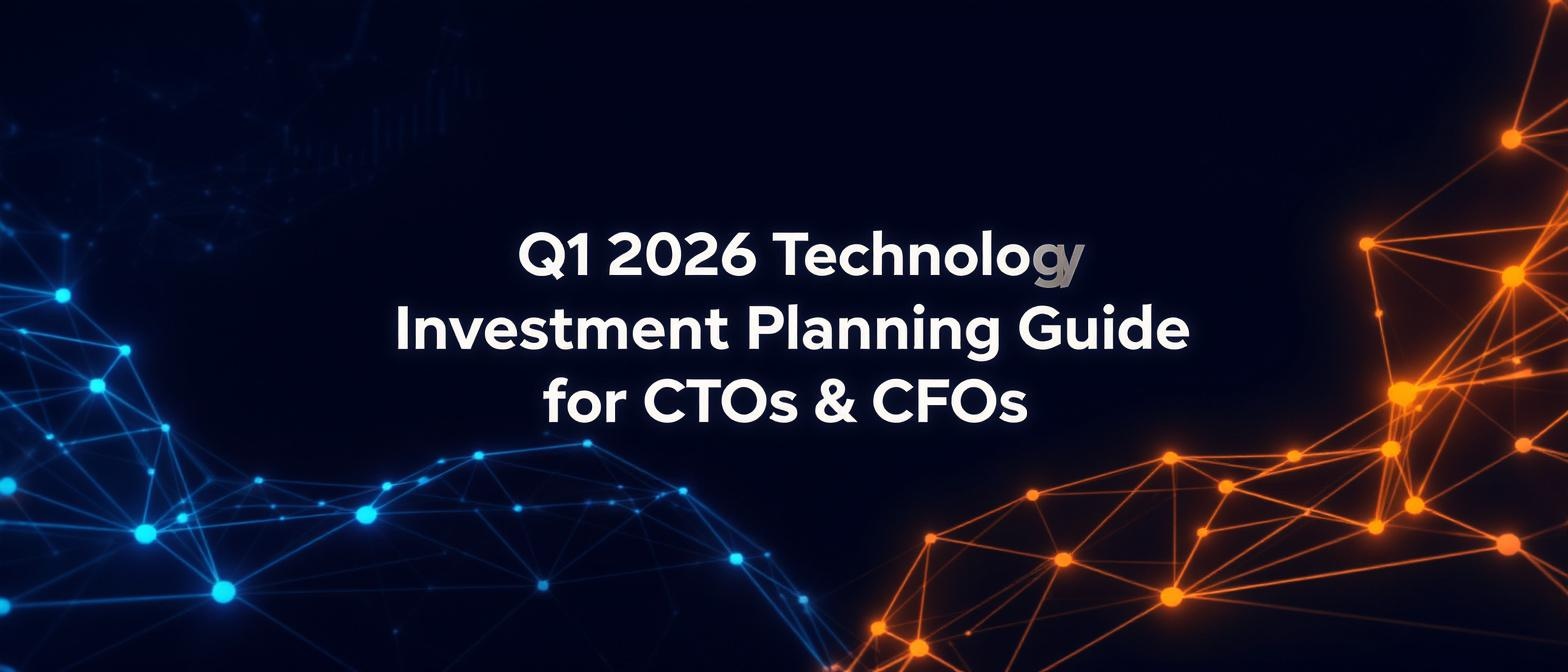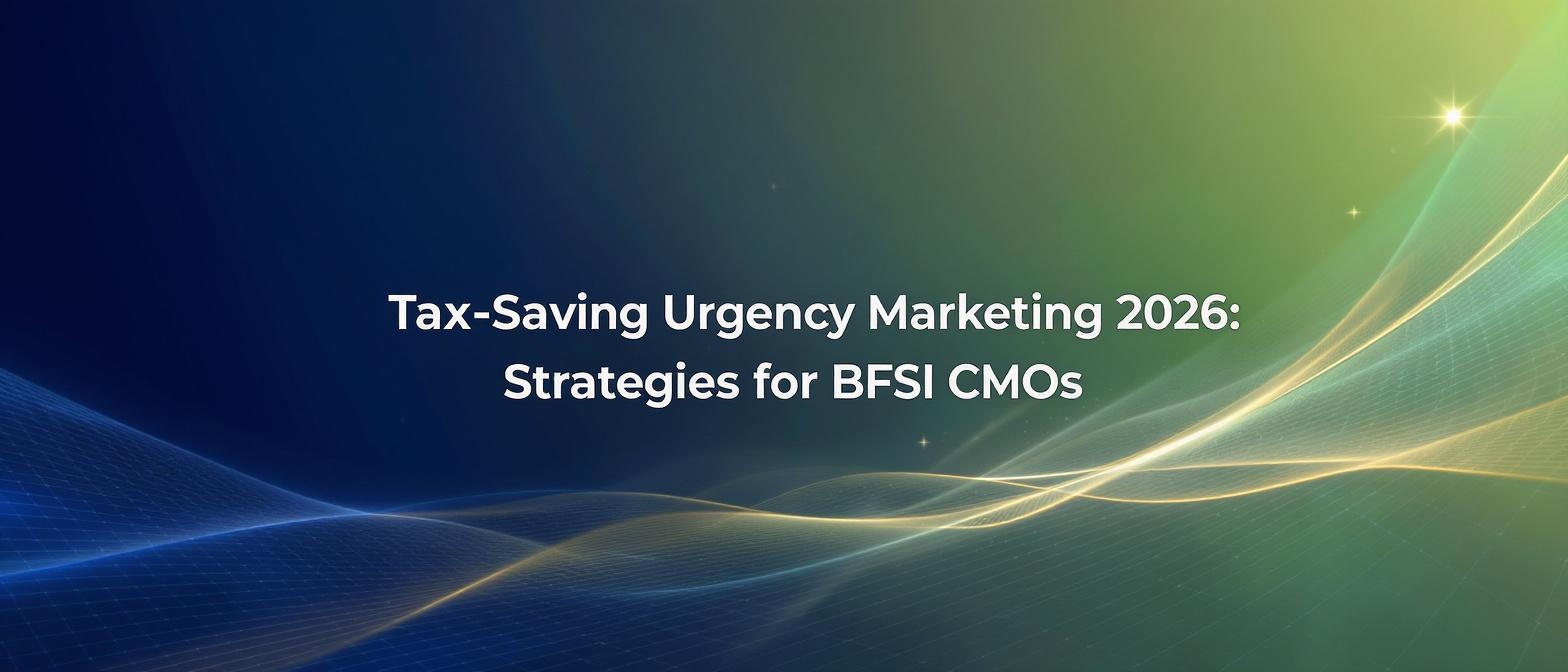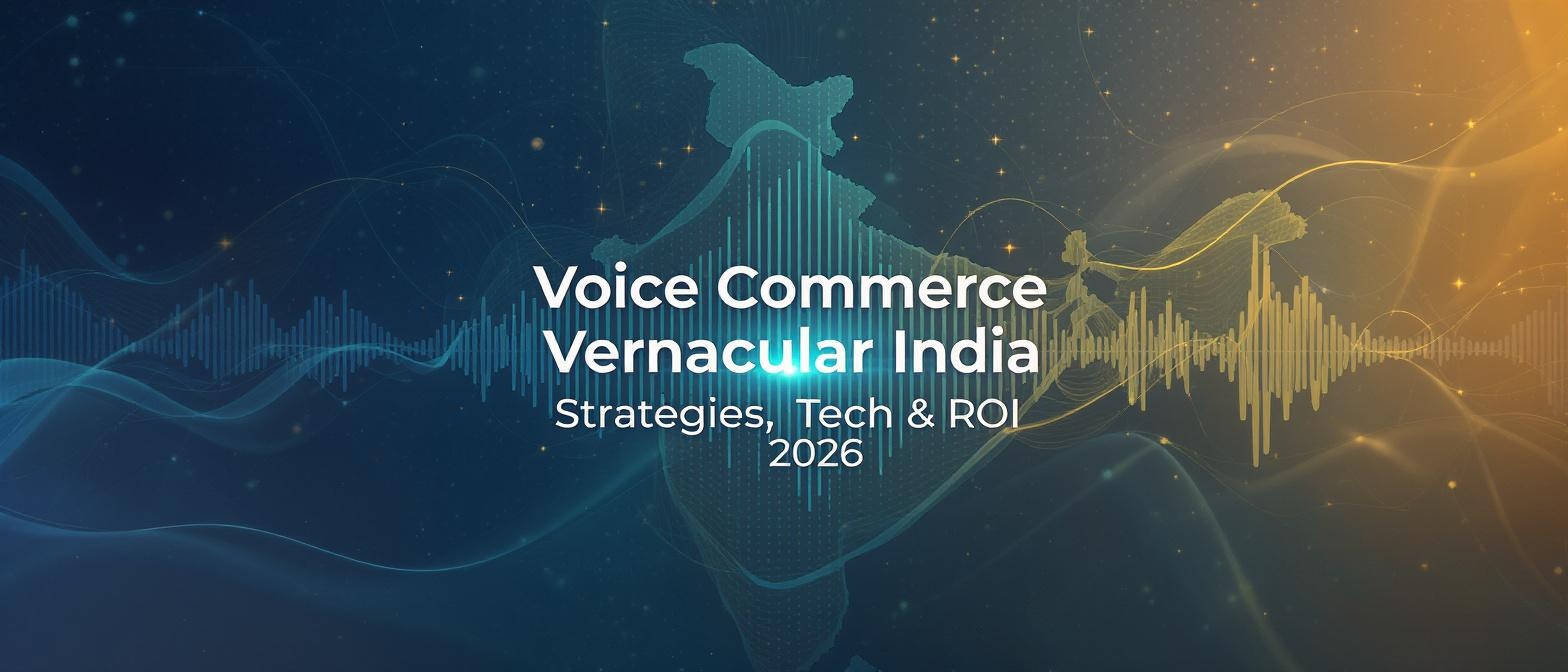Q1 2026 Technology Investment Planning: A Strategic Blueprint for CTOs & CFOs
Estimated reading time: about 12 minutes
Key Takeaways
- Establish a strategic partnership between CTOs and CFOs to align technology budgets with measurable business outcomes.
- Prioritize AI-powered personalization, video marketing, and automation for higher ROI and competitive advantage.
- Adopt a continuous cycle of technology audits, pilot programs, and governance to ensure fiscal and operational efficiency.
- Leverage emerging trends like Edge Computing, Industry-Specific Clouds, and Zero Trust security for Q1 2026 and beyond.
Aligning Technology Spend with Business Growth for the Future
Strategic Q1 2026 technology investment planning is the critical process of aligning technology budgets with tangible business outcomes. It’s about making every dollar invested in technology a driver for ROI, operational efficiency, and long-term resilience. As markets evolve, this level of fiscal and technological foresight is no longer optional; it's the cornerstone of competitive advantage.
This blueprint is designed for Chief Technology Officers (CTOs) and Chief Financial Officers (CFOs), the two pillars of enterprise innovation and financial governance. Effective collaboration between these roles is essential for marketing technology budget justification, comprehensive fiscal year technology planning, and rigorous enterprise technology spend optimization. Without this synergy, even the most promising technology can become a cost center rather than a growth engine.
In this guide, we will dissect the essential components of a forward-looking technology investment strategy. We'll explore emerging macro-trends shaping 2026 budgets, dive deep into allocating funds for Artificial Intelligence, and calculate the ROI of cutting-edge personalization and video marketing investments. Ultimately, this is a roadmap to ensuring your technology spend is not just a line item, but a strategic asset.
Source: https://www.joineta.org/blog/how-technology-budgets-will-evolve-in-2026-for-smbs-and-enterprises
1. Understanding Q1 2026 Technology Investment Trends
To plan effectively for Q1 2026 technology investment planning, leaders must first understand the powerful macro-trends shaping the enterprise landscape. These trends are not isolated phenomena; they are interconnected forces compelling a shift towards more intelligent, secure, and sustainable operations.
The core trends defining fiscal year technology planning for 2026 include:
- AI & Automation at the Core: Artificial intelligence has graduated from an experimental tool to a mission-critical component of the enterprise stack. Investments are flowing into generative AI platforms like Microsoft Copilot and custom Large Language Models (LLMs) to revolutionize customer service, automate complex workflows, and generate predictive insights.
- The Rise of Sustainable Technology: ESG (Environmental, Social, and Governance) criteria are now a business imperative. This translates to direct investment in green cloud infrastructure, sophisticated carbon-tracking software, and energy-efficient data centers to meet both regulatory demands and consumer expectations.
- Cybersecurity by Design: The concept of "bolting on" security is obsolete. Leading enterprises are embedding security into the development lifecycle from day one. This means prioritizing Zero Trust architecture and leveraging AI-powered threat detection to build inherently secure and compliant systems.
- Migration to Industry-Specific Clouds: Generic cloud solutions are making way for specialized, industry-tailored platforms. Sectors like finance, healthcare, and manufacturing are adopting these clouds to ensure regulatory compliance, enhance data governance, and gain a competitive edge through sector-specific functionalities.
- The Proliferation of Edge Computing: The Internet of Things (IoT) explosion demands faster data processing. Edge computing brings computation closer to the data source, enabling the low-latency analysis required for real-time applications in smart manufacturing, supply chain logistics, and autonomous systems.
- Redefining Work with Human-AI Collaboration: The most effective 2026 strategies will focus on augmenting, not replacing, human talent. Budgets must account for tools that automate routine, repetitive tasks, thereby liberating skilled employees to focus on high-value strategic and creative work.
- Extended Reality (XR) for Immersive Experiences: Augmented Reality (AR) and Virtual Reality (VR) are moving beyond niche applications. They are becoming integral tools for employee training, interactive product demonstrations, and creating deeply engaging customer experiences.
- Preparing for Next-Generation Connectivity: Forward-thinking organizations are already planning for the advent of 6G. While widespread adoption is years away, early pilot programs and infrastructure planning are essential for future-proofing investments in areas like smart cities and advanced autonomous systems.
Compounding these trends are significant market pressures. We are seeing a wave of vendor consolidation and aggressive software stack rationalization. Furthermore, budget ownership is becoming increasingly decentralized, putting the onus on individual business units to prove the value of their spend. In this climate, every dollar for enterprise technology spend optimization must be rigorously vetted for both immediate time-to-value and long-term ROI.
Sources: https://www.joineta.org/blog/how-technology-budgets-will-evolve-in-2026-for-smbs-and-enterprises, https://jetruby.com/blog/tech-trends-guide/
2. Enterprise AI Marketing Budget Allocation
As artificial intelligence becomes central to business growth, CTOs and CFOs must collaborate to define a clear strategy for enterprise AI marketing budget allocation. This isn't about simply buying new tools; it's about carving out a dedicated portion of the marketing budget to fund initiatives that deliver measurable returns. Key investment areas include generative AI for content creation, predictive analytics for hyper-segmentation, and AI-powered platforms for campaign optimization.
The justification for this spend lies in its direct impact on key financial metrics. When planning your AI marketing ROI, focus on these four pillars:
- Customer Acquisition Cost (CAC) Reduction: AI algorithms can analyze vast datasets to identify high-intent audiences with unparalleled precision. This eliminates wasted ad spend on irrelevant segments, directly lowering the cost to acquire each new customer.
- Conversion Rate Uplift: AI enables dynamic, real-time personalization of messaging, offers, and content. Delivering a uniquely relevant experience to each user at the right moment significantly increases the likelihood of conversion.
- Customer Lifetime Value (CLV) Enhancement: By personalizing the post-purchase journey and predicting churn risk, AI helps build stronger, more loyal customer relationships. This leads to higher repeat purchase rates and a substantial increase in overall CLV.
- Operational Efficiency Gains: AI automates time-consuming tasks like data analysis, report generation, and A/B testing. This frees up marketing teams from manual work, allowing them to focus on strategy and creativity, which translates to quantifiable hours saved.
This forward-thinking investment approach is rapidly becoming the norm. A recent Gartner survey revealed that a significant majority of CFOs are planning to increase their technology budgets in 2025 specifically to fuel growth and efficiency initiatives. This data underscores the C-suite consensus that strategic technology spend, particularly in AI, is a primary driver of competitive advantage. Proper marketing technology budget justification is therefore less about risk and more about the opportunity cost of inaction.
3. Fiscal Year Technology Planning: A Strategic Cycle
Effective fiscal year technology planning is a continuous cycle, not a one-time event. It's a structured process that enables organizations to move from reactive spending to proactive, strategic investment. For fiscal 2026 marketing tech allocation, this cycle ensures that every technology decision is deliberate, aligned with overarching business goals, and financially sound.
The planning cycle begins with a comprehensive audit of the existing technology stack. This involves identifying redundancies, uncovering underutilized licenses, and mapping current inefficiencies. Once the gaps are clear, the next step is to align potential technology solutions directly with specific business objectives, such as increasing market share, improving customer retention, or reducing operational costs. This alignment forms the basis of a strategic investment roadmap.
To build a resilient and forward-looking plan, consider these long-term investment strategies:
- De-Risking with Pilot Programs: Before committing to a full-scale, enterprise-wide deployment, allocate a portion of the budget to proof-of-concept (PoC) or pilot programs. This allows you to test a new technology in a controlled environment, measure its impact against predefined KPIs, and build a data-backed business case for a larger investment.
- Augmenting Teams with Vendor Partnerships: No organization can be an expert in everything. Strategic partnerships with managed service providers or specialized technology vendors can augment your internal teams, providing access to deep expertise and cutting-edge capabilities without the overhead of hiring and training.
- Balancing Control with Decentralized Ownership: Empower individual business units to drive technology adoption within their domains. This fosters agility and ensures that solutions meet specific departmental needs. However, this autonomy must be balanced with a central governance framework to maintain security standards, ensure interoperability, and prevent shadow IT.
- Investing in Continuous Learning and Change Management: The most advanced technology is useless if your workforce can't leverage it effectively. A critical and often overlooked budget item is funding for continuous learning, including AI literacy programs, prompt engineering certifications, and robust change management initiatives to ensure smooth adoption and maximize ROI.
This disciplined approach to Q1 2026 technology investment planning transforms the budgeting process from a financial exercise into a strategic planning session that positions the entire organization for future success.
Source: https://www.joineta.org/blog/how-technology-budgets-will-evolve-in-2026-for-smbs-and-enterprises
4. AI Personalization & ROI Planning
The next frontier in customer engagement is AI personalization, and it extends far beyond simply using a customer's first name in an email. True hyper-personalization involves creating unique, one-to-one experiences at a massive scale. This is where generative AI transforms marketing from a broadcast medium into a personal conversation.
AI personalization ROI planning starts with understanding this new capability. It's about crafting hyper-personalized video content where a brand ambassador or celebrity can address millions of individual customers by name, reference their specific context (like a recent purchase or loyalty status), and even speak in their preferred language. This level of customization, which was previously impossible, forges a powerful emotional connection and drives unparalleled engagement. Platforms like TrueFan AI enable this by using advanced AI techniques like face reanimation and voice cloning to turn a single video shoot into millions of unique, personalized messages.
To justify investment in this technology, the ROI drivers must be clearly defined and measured:
- Quantifiable Engagement Metrics: Track core video metrics like view-through rates, completion rates, shares, and interaction rates. Compare the performance of personalized videos against generic video content to calculate the percentage lift.
- Direct Impact on Sales and Retention: Use A/B testing and attribution modeling to measure the direct uplift in conversions, transaction value, and customer retention rates for segments that receive personalized video messages.
- Significant Cost Efficiency: Calculate the cost-per-video for a hyper-personalized campaign and compare it to the exorbitant costs of traditional video production, which often requires multiple shoots, edits, and localization efforts. The ability to generate millions of variants from a single asset represents a massive efficiency gain.
A powerful real-world example comes from the travel industry. The Indian online travel agency Goibibo implemented a personalized video campaign featuring cricket star Rishabh Pant. The results were striking: the campaign "saw a 17% higher WhatsApp read rate with Rishabh Pant personalized videos," demonstrating how personalization directly captures user attention and drives action.
5. Enterprise Video Marketing Investments & Optimization
Video is no longer just a component of digital marketing; it is the dominant force. Forecasts predict that video will account for over 80% of all digital traffic by 2026. In dynamic markets like India, this trend is even more pronounced, with leading brands increasing their video ad spend by an estimated 30% year-over-year. For enterprises, the question is no longer if they should invest in video, but how to optimize that video marketing investment for maximum impact and ROI.
This is where AI-powered platforms are creating a paradigm shift in enterprise video marketing investments. They solve the traditional challenges of scale, cost, and personalization that have long constrained video strategies.
- Hyper-Personalization at Scale: The ability to generate millions of unique videos is a game-changer. For example, TrueFan AI's 175+ language support and Personalised Celebrity Videos allow a brand to speak to every customer individually, in their own language, creating a level of connection that generic ads cannot match.
- Virtual Reshoots & AI-Powered Editing: Imagine needing to change a promotional offer or update messaging across thousands of video assets. Traditionally, this would require expensive and time-consuming reshoots. With AI, you can alter speech and lip movements in existing footage, enabling rapid A/B testing and campaign adjustments in hours, not weeks.
- Real-Time API Integration: Modern video platforms integrate directly into your existing marketing stack (CRM, marketing automation, e-commerce engine). With render times of less than 30 seconds, personalized videos can be triggered in real-time by customer actions, such as cart abandonment or reaching a new loyalty tier.
The cost model for this technology is fundamentally different and vastly more efficient. A single high-budget national TV commercial can cost millions. In contrast, a hyper-personalized video campaign can deliver a unique message to a customer for as little as ₹15 per video. This allows for a more targeted, measurable, and ultimately more effective allocation of the marketing budget.
Crucially, AI video platform ROI calculation is built into these systems. Sophisticated analytics dashboards track engagement, conversion lift, and other key performance indicators in real-time. This provides CFOs and CTOs with the hard data needed to justify incremental spend and continuously optimize campaign performance.
Sources: https://personifycorp.com/blog/video-marketing-in-2024-trends-and-statistics-you-cant-afford-to-ignore/, https://www.storyboard18.com/brand-makers/the-trio-of-video-social-and-retail-to-lead-indias-adex-growth-in-2025-magna-72868.htm
6. Q1 Budget Planning Strategies for Immediate Impact
While long-term vision is critical, Q1 2026 technology investment planning must also deliver tangible results in the short term. The key is to balance foundational investments with initiatives that produce quick, measurable wins. These early successes build momentum and provide the political and financial capital needed for larger, more transformative projects.
Here are five proven Q1 budget planning strategies to drive immediate value:
- Prioritize Quick-Win Technologies: Identify and fund technologies with a rapid time-to-value. AI-powered chatbots, for example, can be deployed quickly to improve customer service response times and reduce support costs. Similarly, implementing or upgrading marketing automation platforms can yield immediate efficiency gains and improve lead nurturing from day one.
- Consolidate and Rationalize the Software Stack: Conduct a thorough audit of all software licenses across the enterprise. It's common to find redundant applications and underutilized seats. Eliminating this waste can often free up 10–15% of the existing software budget, which can then be reallocated to more strategic, high-growth initiatives. This is a foundational step in marketing technology budget justification.
- Focus on Workforce Enablement: Invest in your human capital. Allocate Q1 funds for targeted training programs like AI certifications for your technical teams and prompt-engineering workshops for your marketing and content creators. A skilled workforce that can effectively leverage new tools will accelerate the ROI of every technology you deploy.
- Leverage Strategic Platform Partnerships: Avoid the heavy capital expenditure (CapEx) associated with building enterprise-grade AI capabilities from scratch. Instead, partner with specialized platforms to access cutting-edge technology as an operational expense (OpEx). For example, partnering with a provider like TrueFan AI gives you immediate access to an enterprise-grade AI video personalization engine without the massive upfront investment in R&D and infrastructure.
- Establish a Data-Driven Governance Model: Implement a system for tracking the performance of all technology investments from the outset. Use dashboards and quarterly business reviews (QBRs) to monitor KPIs. This allows you to quickly identify underperforming initiatives and reallocate funds to those delivering the highest return, ensuring budget agility.
Source: https://www.joineta.org/blog/how-technology-budgets-will-evolve-in-2026-for-smbs-and-enterprises
7. Calculating ROI for AI Video Platforms
For any significant technology investment, a clear and defensible method for AI video platform ROI calculation is non-negotiable. CFOs demand financial accountability, and CTOs need to prove that their technology choices are driving business value. Fortunately, the impact of AI-powered video personalization is highly measurable, allowing for a robust business case.
The process begins with a comprehensive Cost-Benefit Analysis. This involves calculating the Total Cost of Ownership (TCO), which includes platform setup fees, per-video generation costs, and any distribution expenses. This cost is then weighed against the incremental revenue and cost savings generated by the campaign, which are tracked through a combination of engagement lift and sophisticated attribution modeling.
Here’s how to break down the ROI calculation:
- Define and Measure Engagement Lift: The first step is to quantify the immediate impact on user behavior. Measure the percentage increase in key metrics like watch-through rates, click-through rates (CTRs), and social shares for personalized videos compared to a control group that receives generic content. This lift is the leading indicator of a successful campaign.
- Implement Multi-Touch Attribution Modeling: Modern customer journeys are complex and rarely linear. Use multi-touch attribution models to assign appropriate credit to personalized video touchpoints across the sales funnel. This demonstrates how video personalization contributes to conversions, even when it’s not the final click.
- Apply a Clear ROI Formula: The ultimate measure of success is financial return. Use the standard ROI formula to provide a clear, unambiguous figure that resonates with the C-suite: ROI = (Net Revenue from Campaign – Total Campaign Cost) / Total Campaign Cost
- Leverage Real-World Performance Data: The most compelling business cases are built on proven results. Solutions like TrueFan AI demonstrate ROI through detailed analytics that tie directly to business outcomes. For instance, in a campaign for the media group Dainik Bhaskar, the use of personalized celebrity videos resulted in a 3.2x lift in contest participation. This type of hard data transforms the investment conversation from one of speculation to one of predictable returns.
- Track Cost-Savings and Efficiency: Beyond revenue, AI marketing ROI is also driven by efficiency. Quantify the savings from reduced production costs, the elimination of manual editing cycles, and the automation of localization efforts to present a complete financial picture. This is a critical component of enterprise technology spend optimization.
8. Optimizing Enterprise Technology Spend for the Long Term
True enterprise technology spend optimization goes beyond short-term cost-cutting. It is a strategic, continuous discipline focused on building a scalable, efficient, and future-proof technology ecosystem. This long-term perspective ensures that every investment made during fiscal year technology planning contributes to sustainable growth and competitive advantage.
An optimized technology spend is characterized by agility, scalability, and a relentless focus on business outcomes. Here are four essential pillars for achieving this level of strategic optimization:
- Rigorous Alignment with Business Goals: Every single technology line item in the budget must be explicitly tagged to a specific, measurable business objective. Whether the goal is top-line growth, operational efficiency, or an enhanced customer experience (CX), this direct alignment ensures that technology spend is never divorced from business strategy.
- Prioritization of Scalability and Interoperability: In today's dynamic environment, vendor lock-in is a significant risk. Prioritize cloud-agnostic, API-driven solutions that can seamlessly integrate with your existing stack and scale on demand. This architectural flexibility allows the business to grow and adapt without being constrained by rigid, monolithic systems.
- Leveraging Strategic Technology Partners: The role of a technology vendor has evolved into that of a strategic partner. Engage with providers who offer more than just a product; look for partners who provide deep integration support, proactive strategic guidance, and a commitment to continuous innovation. These partners help you maximize the value of your technology spend optimization efforts.
- Implementing a Cycle of Monitoring and Iteration: The technology landscape changes too quickly for a "set it and forget it" approach. Establish a formal process of quarterly technology performance reviews. Use these sessions to analyze performance data, identify underperforming investments, and dynamically reallocate that spend to initiatives with proven, high-ROI potential. This iterative process ensures your budget is always working as hard as possible.
Frequently Asked Questions (FAQ)
1. What is the first step our organization should take in Q1 2026 technology investment planning?
The most crucial first step is to conduct a comprehensive audit of your current technology stack. This involves identifying all existing software and platforms, evaluating their utilization rates, and mapping their costs to specific business functions. This audit will reveal opportunities for consolidation, highlight performance gaps, and provide a data-driven baseline for all future investment decisions.
2. How do we justify a dedicated budget for enterprise AI marketing to our board?
Justification should be built on a clear business case focused on measurable financial outcomes. Frame the investment around projected improvements in key metrics like Customer Acquisition Cost (CAC), Customer Lifetime Value (CLV), and conversion rates. Use industry statistics, such as forecasts showing a 30%+ increase in marketing ROI for companies leveraging AI-driven analytics, and present a pilot program with clear KPIs to demonstrate value before seeking a full-scale budget.
3. What are the biggest hidden costs in fiscal year technology planning?
The biggest hidden costs are often related to human capital, not the technology itself. These include the cost of training and upskilling employees to use new tools, the productivity dip during the transition period (change management), and the cost of hiring specialized talent if needed. A successful budget allocates funds not just for the software license, but for the entire ecosystem of adoption and integration.
4. How can a platform like TrueFan AI help with our Q1 budget planning strategies?
Platforms like TrueFan AI align perfectly with modern budget strategies by converting what was traditionally a large capital expenditure (high-end video production) into a scalable operational expenditure. It allows you to pilot a high-impact personalization campaign with a manageable budget, measure the ROI with precise analytics, and then scale the investment based on proven success. This de-risks the investment and ensures funds are allocated to a strategy with a clear, data-backed path to return.
5. How is "Cybersecurity by Design" a budget consideration and not just an IT strategy?
"Cybersecurity by Design" is a critical budget consideration because addressing security issues late in the development cycle is exponentially more expensive than building them in from the start. Budgeting for security upfront—by investing in secure coding training, automated code analysis tools, and Zero Trust architecture—reduces the long-term financial risk of data breaches, regulatory fines, and reputational damage, making it a key element of prudent fiscal planning.
6. What is "sustainable technology" and why should it be part of our 2026 investment plan?
Sustainable technology, or "Green IT," refers to investments aimed at reducing the environmental impact of your technology operations. This includes migrating to energy-efficient cloud providers, utilizing carbon-tracking software, and optimizing data center cooling. It should be part of your 2026 plan because it addresses growing regulatory requirements, meets the demands of eco-conscious consumers and investors, and can lead to significant long-term cost savings through reduced energy consumption.
Conclusion: Turning Technology Investment into Competitive Advantage
In conclusion, strategic Q1 2026 technology investment planning is a multi-faceted discipline that demands a holistic view of the enterprise. It requires a deep understanding of emerging technology trends, a rigorous approach to enterprise AI marketing budget allocation, and an unwavering focus on measurable ROI. Success is no longer about simply acquiring the latest technology; it's about integrating intelligent solutions like AI-driven personalization and video marketing into the core of your business strategy and optimizing every dollar spent for maximum impact.
The path forward is clear. The time has come for CTOs and CFOs to champion a new era of collaborative, data-driven decision-making. We encourage you to take the following steps:
- Conduct a full, end-to-end audit of your current technology stack to identify immediate opportunities for optimization.
- Initiate a pilot program for AI video personalization to gain firsthand data on its power to drive engagement and conversion.
- Partner with innovative platforms that can provide enterprise-grade capabilities and help you achieve tangible, measurable business outcomes.
By embracing this strategic blueprint for enterprise technology planning, you can transform your technology budget from a cost center into the most powerful engine for growth and innovation in your organization. The future belongs to those who plan for it today.





